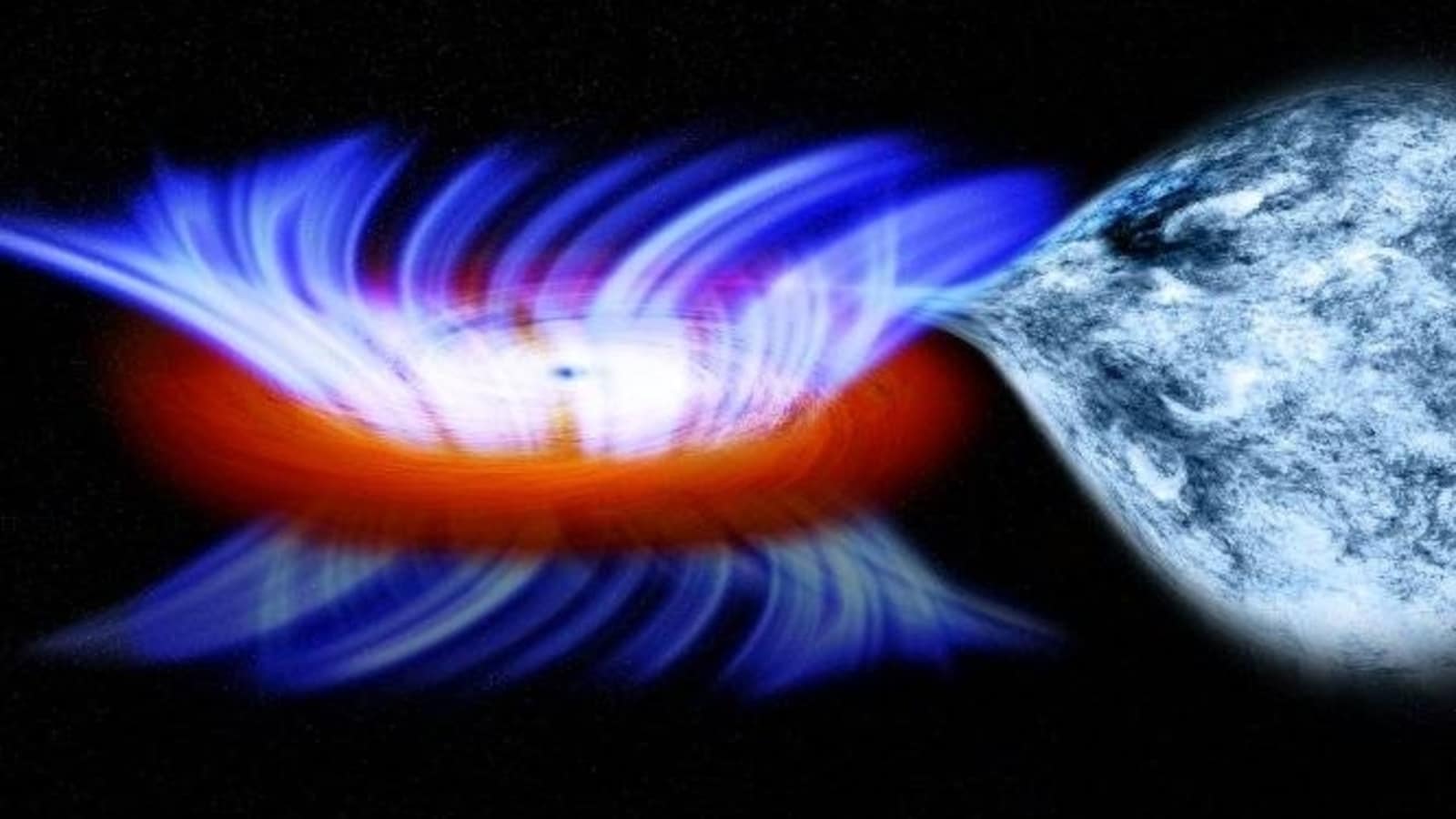
NASA, supermassive black hole, black hole, nasa Black Hole, Milky way galaxy, Sagittarius A*, supermassive black hole in milky way, what is a black hole, why do black holes have strong gravity, types of black hole, different types of black hole, what is supermassive black hole, stellar-mass black hole
Ever since they were first surmised, black holes have remained an insurmountable challenge for scientists. Scientists have been trying to study it but since they are so hard to find, locating them in itself is a big challenge. And to make matters worse, the confirmed location of black holes that scientists have been able to identify so far are all located far away, making observing and studying them difficult. But NASA believes we do not need to go that far to learn more about black holes. A supermassive black hole exists within our Milky Way galaxy. And with this confirmation, astronomers are now aiming to uncover more secrets about this elusive celestial body. While we do not know much about the black holes, there are some things we do know about them. Read on to find out. Also Read: Are Comets falling stars? Can they strike Earth? NASA reveals what they are
Earlier this month, NASA revealed that a supermassive black hole called Sagittarius A*, with the mass of four million Suns, was found within our own galaxy. A black hole’s presence is a rare phenomena as it is, but to find the rarest of them all — a supermassive black hole — has made scientists rethink everything they know about these super gravity zones. As scientists now undergo new studies to better understand them, let us take a look at everything we know about these celestial bodies. Also Read: NASA Hubble Telescope discovers a giant Galaxy; Sized 2.5x LARGER than our Milky Way Galaxy!
Also read: Looking for a smartphone? To check mobile finder click here.
What is a black hole
In 1783, the idea that a black hole is a zone in space where gravity is so strong that nothing, not even light can escape from it, was first given by John Michell. Today, we know black holes as a compact ball of matter in an extremely condensed state that exerts such a high gravitational pull that not even light can come out of it.
Why do black holes have strong gravity
The law of gravitation tells us that the larger the mass the higher the gravitational pull. That is why the Moon is pulled by the Earth and the Earth is pulled by the Sun. Black holes contain the mass, equivalent to hundreds of Suns in a space not larger than a few kilometers. This condensed mass is what results in an unbelievably strong gravitational force.
Different types of black holes
There are two types of black holes that we know of so far, according to NASA. One is called the stellar-mass black hole. It forms when a large star (much bigger than the Sun) burns up all its fuel and causes a supernova explosion. After the explosion, the star collapses within itself, creating the black hole.
The other one is known as the supermassive black hole. It contains significantly more matter than the stellar-mass black hole and can contain as much matter as 1-100 million Suns! It was believed that this type of black holes is more rare due to the amount of matter required to create them, but lately it is being proven wrong after astronomers were able to find a supermassive blackhole in our very own Milky Way.
/* window.addEventListener(‘load’, (event) => {
setTimeout(function () {
fbeventCall();
}, 3000);
});*/
function fbeventCall(){
!function(f,b,e,v,n,t,s)
{if(f.fbq)return;n=f.fbq=function(){n.callMethod?
n.callMethod.apply(n,arguments):n.queue.push(arguments)};
if(!f._fbq)f._fbq=n;n.push=n;n.loaded=!0;n.version=’2.0′;
n.queue=[];t=b.createElement(e);t.async=!0;
t.src=v;s=b.getElementsByTagName(e)[0];
s.parentNode.insertBefore(t,s)}(window, document,’script’,
‘https://connect.facebook.net/en_US/fbevents.js’);
fbq(‘init’, ‘472894447108740’);
fbq(‘track’, ‘PageView’);
}
This news is republished from another source. You can check the original article here

Be the first to comment